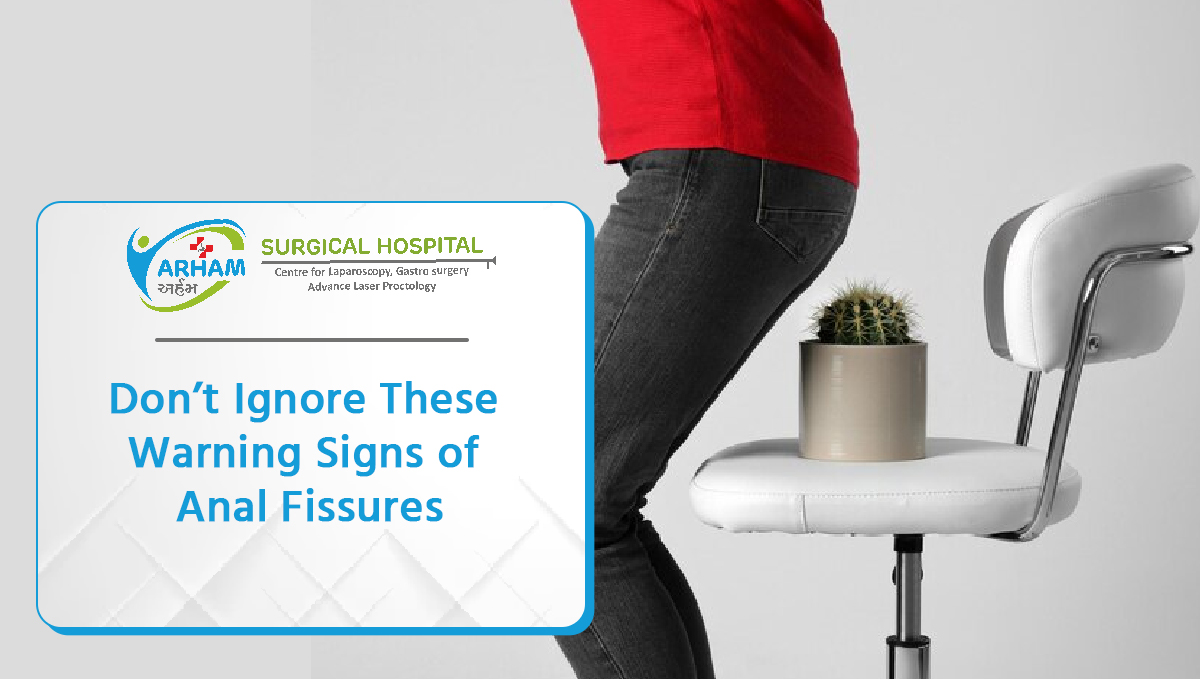Introduction
Anal fissures are small tears or cracks in the lining of the anus that can cause significant discomfort and pain. They are a common yet often under-recognized condition that can affect anyone. Understanding the warning signs and symptoms of anal fissures is crucial for seeking timely treatment and preventing complications - Piles Doctor in Ahmedabad. This blog will explore the key warning signs of anal fissures, their causes, and the importance of not ignoring these symptoms.
What Are Anal Fissures?
Anal fissures are painful tears in the anal canal, the part of the body that connects the rectum to the outside. They often occur when the lining of the anus is stretched or torn, typically due to passing hard or large stools. Anal fissures can be acute (lasting less than six weeks) or chronic (persisting for more than six weeks). While they are usually not serious, they can cause significant discomfort and affect one’s quality of life. - Piles Doctor in Ahmedabad
Common Warning Signs of Anal Fissures
1. Sharp Pain During Bowel Movements
One of the most noticeable signs of an anal fissure is sharp, severe pain during and after bowel movements. The pain often starts during the act of defecation and may persist for hours afterward. This intense discomfort can make bowel movements a stressful experience and may lead to a fear of going to the bathroom, which can exacerbate the problem.
2. Bleedingt
You might notice bright red blood on toilet paper, in the toilet bowl, or on the surface of the stool. This bleeding is typically due to the tear in the anal lining and is often associated with the pain experienced during bowel movements. While the presence of blood can be alarming, it is a common symptom of anal fissures. Piles Doctor in Ahmedabad
3. Itching or Irritation
Anal fissures can cause itching or irritation around the anus. This itching can be due to the skin’s reaction to the fissure or because of irritation from the passage of stool. The urge to scratch or rub the area can lead to further irritation and discomfort.
4. Visible Tears or Cuts
In some cases, fissures may be visible as small cuts or tears around the anal opening. These visible signs can be identified during a self-examination or by a healthcare provider during a physical exam. The presence of such tears confirms the presence of an anal fissure. - Hernia Surgeon in Ahmedabad
5.Swelling or Lump
Swelling or a lump near the anus, known as a sentinel pile, can occur as a result of chronic anal fissures. This swelling is often a reaction to the persistent irritation and inflammation caused by the fissure. It is essential to consult a healthcare provider to distinguish between a sentinel pile and other potential conditions.
6. Discharge
Anal fissures can sometimes lead to a discharge of mucus or pus. This discharge can be a sign of infection or inflammation. While not as common, it’s important to monitor any unusual discharge and consult a healthcare professional if it occurs.
Causes and Risk Factors
Understanding the causes of anal fissures can help in preventing and managing them effectively. Common causes and risk factors include:
- Constipation: Hard, dry stools are a primary cause of anal fissures. Straining during bowel movements can put excessive pressure on the anal canal, leading to tears.
- Chronic Diarrhea: Frequent bowel movements due to diarrhea can irritate the anal lining, increasing the risk of fissures.
- Childbirth: Women who have recently given birth may be at higher risk of developing anal fissures due to the pressure exerted during labor.
- Anal Intercourse:Trauma or irritation from anal intercourse can lead to the development of fissures.
- Inflammatory Conditions: Conditions like Crohn’s disease or other inflammatory bowel diseases can predispose individuals to anal fissures.
- Poor Hygiene:Insufficient cleaning of the anal area can contribute to irritation and fissures.
Importance of Seeking Treatment
Ignoring the warning signs of anal fissures can lead to chronic pain and complications. Early diagnosis and treatment are crucial for preventing the condition from becoming chronic and for alleviating symptoms. Here’s why seeking treatment is important:
- Prevention of Chronicity: Acute fissures can become chronic if left untreated. Chronic fissures can be more challenging to treat and may require more invasive procedures.
- Pain Relief: Effective treatment can alleviate the severe pain associated with anal fissures, improving your quality of life.
- Avoidance of Complications: Untreated fissures can lead to complications such as anal infections or the formation of abscesses. Prompt treatment helps prevent these issues.
- Improved Healing: Medical intervention can promote faster healing and reduce the risk of recurrent fissures.
Treatment Options
Treatment for anal fissures typically involves a combination of self-care measures and medical interventions. Common treatment options include:
- Dietary Changes: Increasing fiber intake and drinking plenty of water can help soften stools and reduce straining during bowel movements.
- Topical Medications: Creams and ointments containing nitroglycerin or calcium channel blockers can help relax the anal sphincter and promote healing.
- Sitz Baths: Soaking in warm water several times a day can alleviate pain and promote healing.
- Pain Relief: Over-the-counter pain relievers can help manage discomfort.
- Medical Procedures: In persistent cases, procedures such as Botox injections or surgical interventions may be necessary.
Conclusion
Anal fissures, though common, can significantly impact your well-being if left untreated. Recognizing the warning signs—such as sharp pain, bleeding, itching, visible tears, swelling, and discharge—is essential for seeking timely treatment. By addressing these symptoms promptly and making necessary lifestyle changes, you can manage anal fissures effectively and prevent complications. If you experience any of these symptoms, consult a healthcare provider to ensure appropriate care and treatment.


